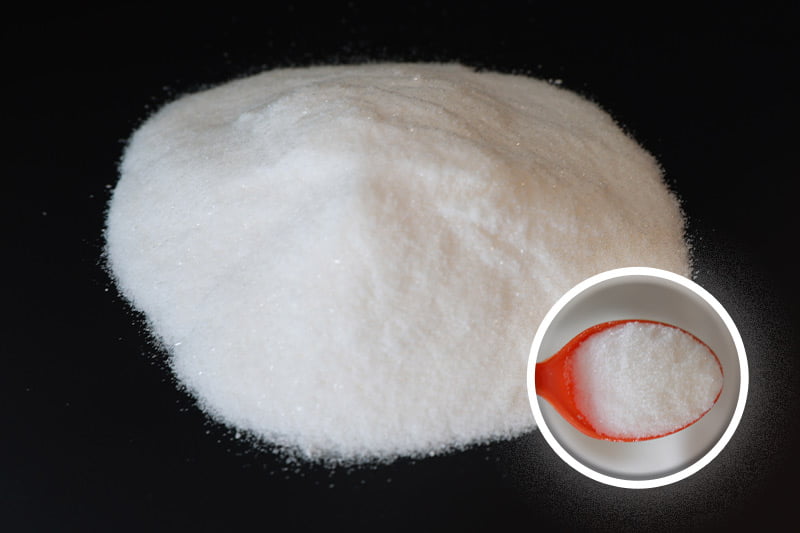Introduction

Sodium formate crystals are white, odorless, and crystalline solids with a molecular weight of 68.01 g/mol. In the realm of chemical engineering, sodium formate crystals emerge as a versatile solution, offering a plethora of applications across diverse industries. These crystals, derived from the reaction of sodium hydroxide with formic acid, boast remarkable properties that render them indispensable in various chemical processes. From their role in leather tanning to their use as additives in drilling fluids, sodium formate crystals have established themselves as key players in modern industrial practices. Join us on a journey to explore the multifaceted nature of sodium formate crystals and their pivotal role in shaping the landscape of chemical processes.
Understanding Sodium Formate Crystals
Sodium formate is a crystalline solid, chemically represented as Na[HCOO]. It is a salt derived from formic acid and is often used in its hydrated form.
Properties of Sodium Formate Crystals
- High Solubility: Sodium formate crystals are highly soluble in water and various organic solvents, making them easy to dissolve and incorporate into different chemical systems.
- Stability: Sodium formate crystals are stable under normal storage conditions and do not readily decompose, ensuring consistent performance in chemical processes.
- Non-Toxicity: Sodium formate crystals are non-toxic and non-corrosive, posing minimal health and safety hazards during handling and use.
- Écologique: Sodium formate crystals are biodegradable and have a low environmental impact, making them an eco-friendly choice for various applications.
Applications of Sodium Formate Crystals
Sodium formate find extensive use in various industries due to their unique properties and versatility. Here are some of the key applications:
1. Chemical Manufacturing:
- Conservateur: Sodium formate acts as a preservative in the production of formaldehyde, preventing polymerization and stabilizing the solution.
- Reducing Agent: Sodium formate serves as a reducing agent in various chemical reactions, particularly in the production of pharmaceuticals and fine chemicals.
- Buffering Agent: Sodium formate acts as a buffering agent in chemical processes, maintaining a stable pH and preventing unwanted side reactions.
2. Pharmaceuticals:
- Intermediate in Drug Synthesis: Sodium formate is an intermediate in the synthesis of various pharmaceuticals, including antibiotics and anti-inflammatory drugs.
- Excipient: Sodium formate is used as an excipient in pharmaceutical formulations, enhancing the stability and solubility of drug substances.
3. Agriculture:
- Animal Feed Additive: Sodium formate is added to animal feed as a preservative and to improve digestibility and nutrient absorption.
- Fertilizer Agent: Sodium formate can be used as a fertilizer agent, providing a source of formate for plant growth and enhancing soil fertility.
Table of Common Applications of Sodium Formate Crystals
| Industrie | Application |
|---|---|
| Fabrication de produits chimiques | Preservative, Reducing Agent, Buffering Agent |
| Médicaments | Intermediate in Drug Synthesis, Excipient |
| Agriculture | Animal Feed Additive, Fertilizer Agent |
Factors Influencing the Use of Sodium Formate Crystals

Several factors influence the choice to use sodium formate, including:
Specific Application Needs: The particular requirements of the application, such as pH control or preservation, will guide the choice.Factors such as compatibility with other ingredients and desired texture may also influence the selection of the appropriate additives.
Rentabilité: The cost of sodium formate compared to alternative chemicals can affect its selection.The availability of sodium formate in the market and its compatibility with the specific application requirements are also important factors to consider when choosing the chemical for a particular process. Additionally, the environmental impact and regulatory considerations associated with sodium formate should be taken into account in the decision-making process.
Impact environnemental: The environmental footprint and disposal considerations of the chemical are important, especially in industries with strict regulations.Additionally, companies that prioritize sustainability and corporate social responsibility must carefully evaluate the impact of the chemical on the environment. Proper disposal methods, such as recycling or incineration, should be implemented to minimize harm to ecosystems and human health. Failure to adhere to regulations and best practices can result in fines, reputational damage, and even legal action. It is crucial for businesses to prioritize eco-friendly practices and invest in sustainable alternatives to minimize their environmental footprint.
Sécurité et manipulation: The safety profile and ease of handling of sodium formate are favorable, which can influence its use.Sodium formate is commonly used in various industries due to its stability and low toxicity. Its environmentally friendly properties make it a preferred choice for applications such as de-icing agents, leather tanning, and oil drilling. Additionally, its compatibility with other chemicals and materials further enhances its versatility and usability. Overall, the safety and handling characteristics of sodium formate make it a reliable and efficient option for many different purposes.
Conclusion
Sodium formate crystals are a valuable and versatile compound with a wide range of applications in various industries. Their unique properties, including high solubility, stability, non-toxicity, and environmental friendliness, make them a preferred choice for numerous chemical processes. As research and development continue, new applications for sodium formate crystals are likely to emerge, further expanding their role in various industrial sectors.
FAQ
Q: How are sodium formate crystals produced?
A: Sodium formate crystals are typically produced through the reaction of sodium hydroxide (NaOH) with carbon monoxide (CO) under high pressure and temperature.
Q: What are the storage conditions for sodium formate crystals?
A: Sodium formate crystals should be stored in a cool, dry, and well-ventilated place, away from direct sunlight and heat sources.
Q: What are the safety precautions when handling sodium formate crystals?
A: While sodium formate crystals are non-toxic, it is recommended to wear gloves, safety glasses, and a dust mask when handling them to avoid inhalation and skin contact.
Q: How can I dispose of sodium formate crystals safely?
A: Sodium formate crystals can be disposed of down the drain with plenty of water. For larger quantities, consult local regulations for proper disposal methods.


